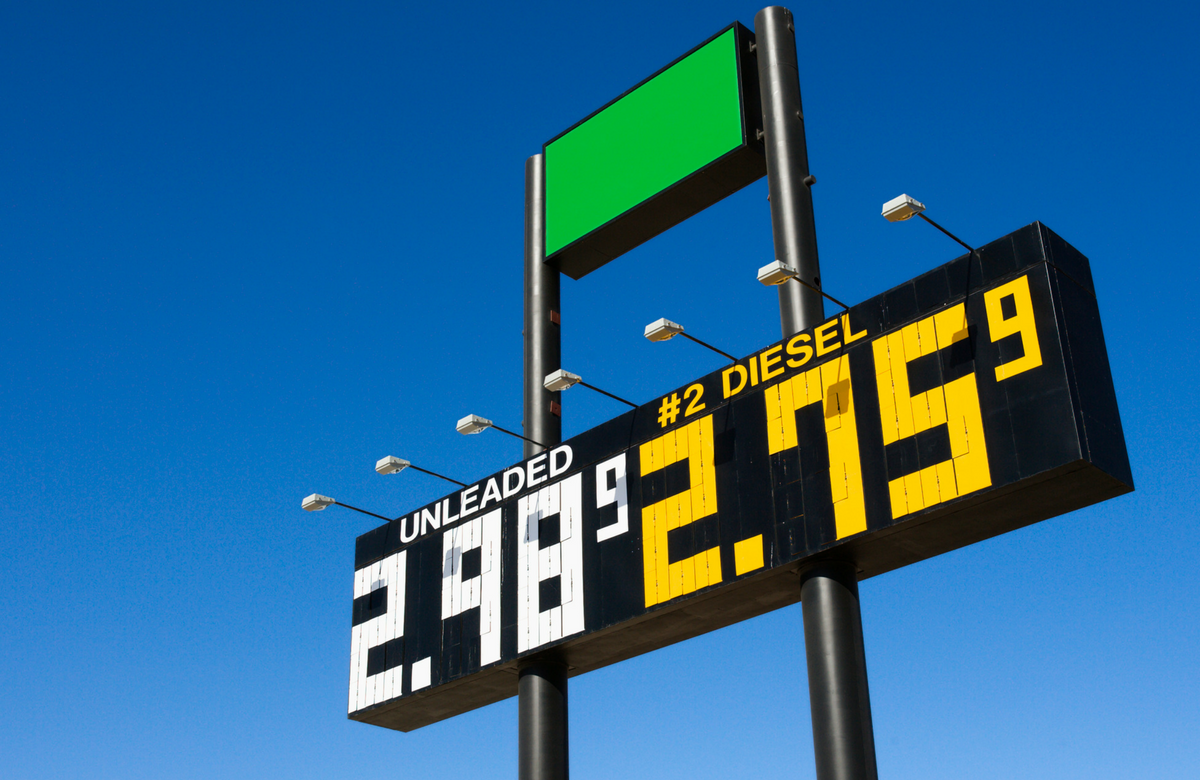The average price of gas last week increased to the highest level in four years, raising concerns that higher prices at the pump may start to eat into consumers’ disposable income.
Which, of course, raises the specter that consumers could have less money to spend on beer at a time when the sluggish industry is about to transition into a critical period: summer selling season. In short, the timing couldn’t be worse.
The nationwide average price of gas at retail rose to $2.93 this weekend, up 57 cents, or 24 percent, from $2.36 a year ago, according to AAA. Prices are up 12 cents over the last 14 days, rising to the highest point going into Memorial Day weekend since 2014. And the motorist trade group expects prices will keep increasing.
A decision by the Trump administration to re-impose sanctions on major oil producer Iran “combined with the switchover to summer blend, growing global demand and shrinking supply continues to fuel pump prices as we approach the summer driving season,” said Jeanette Casselano, a AAA spokeswoman, in a blog post. “AAA predicts that the national average may reach $3 (per) gallon this summer, especially if crude oil prices continue to increase.”
Counterintuitively, perhaps, when gas prices rise, consumers visit gas pumps more often, according to National Association of Convenience Stores data. But they tend to not fill their tanks all the way and are less likely to shop inside convenience stores, an important sales channel for the beer industry, accounting for about 31 percent of total sales volume, per Beer Institute figures.
While just 11 percent of Americans say they’ll drive less in response to higher gas prices, a growing percentage of them say they’ll limit discretionary spending, according to a NACS consumer survey conducted earlier this month. A third of fuel consumers say they’ll dine out “much less” or “somewhat less” this month, compared with 27 percent in April. Just more than a fifth (22 percent) say there are likely to spend “much less” or “somewhat less” on typical non-gas household purchases, compared with 16 percent in April, per the survey.
Gas and beer connection?
The big question for the beer industry is how much the gas spike will affect beer sales. Anecdotes and conventional wisdom aside, available data from both the Beer Institute and the National Beer Wholesalers Association suggest little correlation.
“Look, when gas prices were low from 2014 to 2016, we were wholly expecting to see a rebound in beer consumption, and we just didn’t see it,” says Lester Jones, NBWA’s chief economist. “That’s because when gas prices were down, prices for a whole bunch of other things in consumers’ baskets were up.”
This time around, while gas prices are up, prices for a big basket of other goods and services — wireless services, new cars, coffee, packaged spirits, groceries, clothing, child care, college tuition and movies among them — are all down, trailing inflation and average wages, making them relatively cheaper for consumers. (Other staples are rising higher than inflation, such as medical care, rent and housing prices.)
The point is, when looking at consumer health, it’s not as simple as just looking at the effect rising gas prices have on beer, Jones says. “It’s beer versus gas versus rent versus telecommunications versus clothing versus tuition and on and on. So just because gas prices are going up, I’m thinking we probably won’t see a meaningful decrease in (beer) consumption.”
But for convenience stores, under pressure from changing consumer purchasing patterns and a struggling class of low-income consumers, higher prices at the pump could be another blow to inside sales and profitability. Wells Fargo Analyst Bonnie Herzog, in a recent note to clients, said the channel is “suffering,” changing her outlook to be “much more cautious, much more concerned” as foot traffic has been soft and the number of consumer trips lower.
Getting gas buyers in the store
And as gas prices rise, consumers change how they shop, forgoing loyalty to preferred stores in favor of price shopping for the cheapest gasoline, according to MillerCoors data. “It’s a worry. As prices go up, it starts to change the business,” says Jovina Young, senior director of channel marketing for convenience stores for MillerCoors. “For us, the conversation becomes about enticement and conversion: Once you’ve got a customer there, how do you get them to first go inside the store, and then to purchase beer?”
It’s a critical question for brewers, distributors and C-store owners; packaged beer is the No. 3 category by sales dollars in the channel (trailing only cigarettes and packaged non-alcoholic beverages.)
One lever is pricing and making consumers aware of deals prior to their stop, Young says. Using targeted media and store loyalty programs to advertise beer also helps drive traffic to stores. On the pricing side, some retailers will invest more promotions on value and economy segments and stock more smaller packs to hit lower price points.
Another is advertising at the pump, particularly with value messages. In addition to standard discounts, some convenience stores bundle beer with pizza or create other value propositions to entice consumers inside. And once they get them there, they’ve got to ensure beer is in-stock during key time frames such as between 3 p.m. and 8 p.m. and heading into the weekend.
“If consumers can’t find what they want, they’ll walk. A third of them will walk away with nothing if you don’t have their brand and their preferred pack,” Young says. “When gas prices are high, this becomes very much about execution, and we cannot fail on execution.”

